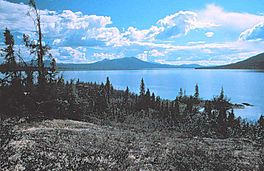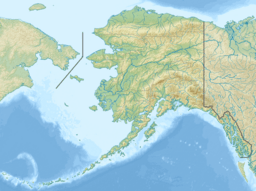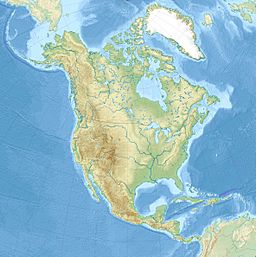Walker Lake (Northwest Arctic, Alaska) facts for kids
Quick facts for kids Walker Lake |
|
|---|---|
 |
|
| Location | Northwest Arctic Borough, Alaska, United States |
| Coordinates | 67°07′36″N 154°21′47″W / 67.12667°N 154.36306°W |
| Primary outflows | Kobuk River |
| Basin countries | United States |
| Surface elevation | 679 feet (207 m) |
| Designated: | 1968 |
Walker Lake is a special lake located in the far northern part of Alaska. It is the starting point, or "source," of the Kobuk River, which eventually flows into Kotzebue Sound. This lake is found deep inside the remote Northwest Arctic Borough, far away from cities.
Exploring Walker Lake
Walker Lake was first explored by a team led by John C. Cantwell in 1885. This exploration was part of a mission by a government group that helped map and protect areas. The lake is also known by another interesting name: "Big Fish Lake."
The Legend of Big Fish Lake
Local Inupiaq legends tell exciting stories about giant, fierce fish living in Walker Lake. These stories describe fish so big that they were a challenge to catch! During Cantwell's expedition, a local person tried to catch one of these legendary fish. They used a very unusual fishing hook made from a whole set of reindeer antlers. For bait, they used an entire goose! This shows how large and powerful these fish were believed to be.
A Special Natural Place
In 1968, Walker Lake received an important recognition. It was named a National Natural Landmark by the National Park Service. This means the lake is a very important natural area in the United States. It is protected because it has unique natural features and is a great example of Alaska's wild beauty.



